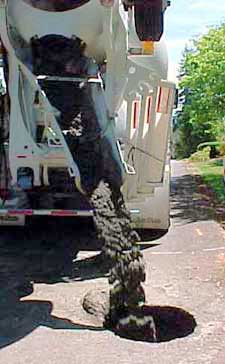|
Shape
poetry / shaped poetry / shape poetics,
etc.
These terms all make sense, but I
find that most words that apply to shape, design, and so on--words
that normally apply to what we can see--have been used so
often figuratively, in relation to literature, that it takes a
slightly uncomfortable effort to bear in mind that we'd be using
them literally here. (Not that kids would have this
problem.) That is, a sentence that

Poetic material to pore over?
reads "This is a carefully-shaped work" can apply to
visual art, written art, or music, and most crafts, too. Indeed, "to
shape" something can mean not only "to create" but
often "to create
well." Also, the combinations of "shape-"
and "poet-" are all a bit awkward to say, with those two plosives
bumping together.
Visual poetry
May raise an issue similar to the word "shape." That is, the word
"visual" is used frequently and effectively in discussing writing,
to mean "vivid" and "descriptive." Borrowing it for this
occasional literal meaning might perhaps create a bit of
confusion.
Graphic poetry (perhaps the first
choice)
To me,
this works the best, especially for kids. True, it shares the
same problem as words like "shaped" and visual;" that
is, "graphic" too is often used to describe the content
(as opposed to the form) of writing. And in this case, there's
another issue: "graphic" is applied to harsh subjects that may
even be unpleasantly explicit (As in "Be
forewarned, this material is pretty graphic"). Yet that
usage will rarely, if ever, be encountered by most
kids--probably less often than the literary use of "visual," or
"shape," and certainly not often enough to create
confusion.
More important, though, is a unique
distinction: Thanks to the ubiquitous use of
"graphic" in computer contexts, most kids know that
this word--whether as noun or adjective--typically is a term
that concerns a picture or image. Indeed,
that's probably the first, the commonest, and maybe the
only use of the word most people will now encounter, growing
up. Moreover, "graphic poetry" is easy to say and hear.
Now "see-hear"?
(Very perhaps.)
Maybe a case
could be made for see-hear poetry too,
though, especially so where kids are concerned. One of the
interesting things about poetry--so evident that it can be
missed--is that poetry is a heard art, at least in the
mind's ear. So when a poem has a visual aspect too, it stands
at an interesting juncture.
A side issue: Some say that
concrete/graphic poetry does not appeal to the ear, or at least need
not. Of course, that's sometimes true, yet
such poetry may have an aural aspect too, and may even
incorporate traditional rhythm and rhyme (as mine often
does). That's why see-hear poetry might be a good
term; it emphasizes both possibilities. (It need not insist that
both be present.) Compared to it, graphic
poetry--while more elegant and grown-up--is
perhaps somewhat less meaningful: It emphasizes that this
poetry has a visual element, yes; but it does not serve as a
reminder that there can be an aural element too.
Against see-hear poetry
is that it may be a bit self-conscious. But that can be a
function of novelty. The slang term "24/7" seemed self-conscious to
me; now it seems simply useful. Also, the
explicitness can be useful for kids. (And the implied
reference to "Now, see here!"--in terms of "Hey, look at
this!"--has some utility, too.)
Time to resolve this burning
issue?
In any case, this might
be discussed in an appropriately civilized way--indeed,
an aesthetic way--by means of poems, when possible. Whether or
not this becomes a front-page controversy (I'm not holding my
breath), I have offered some contributions to such
a theoretical discussion, in the form of two debate-poems, which are examples of
argumentum ad cementum: One is
called The Concrete
Rose (more
for grownups); the other is Between The
Cracks (more for kids). Let the rhymes
begin.
(You're invited to add your own
thoughts on "concrete vs. graphic vs. shaped" and so on, in an
e-mail,
or on this site's .)
|












